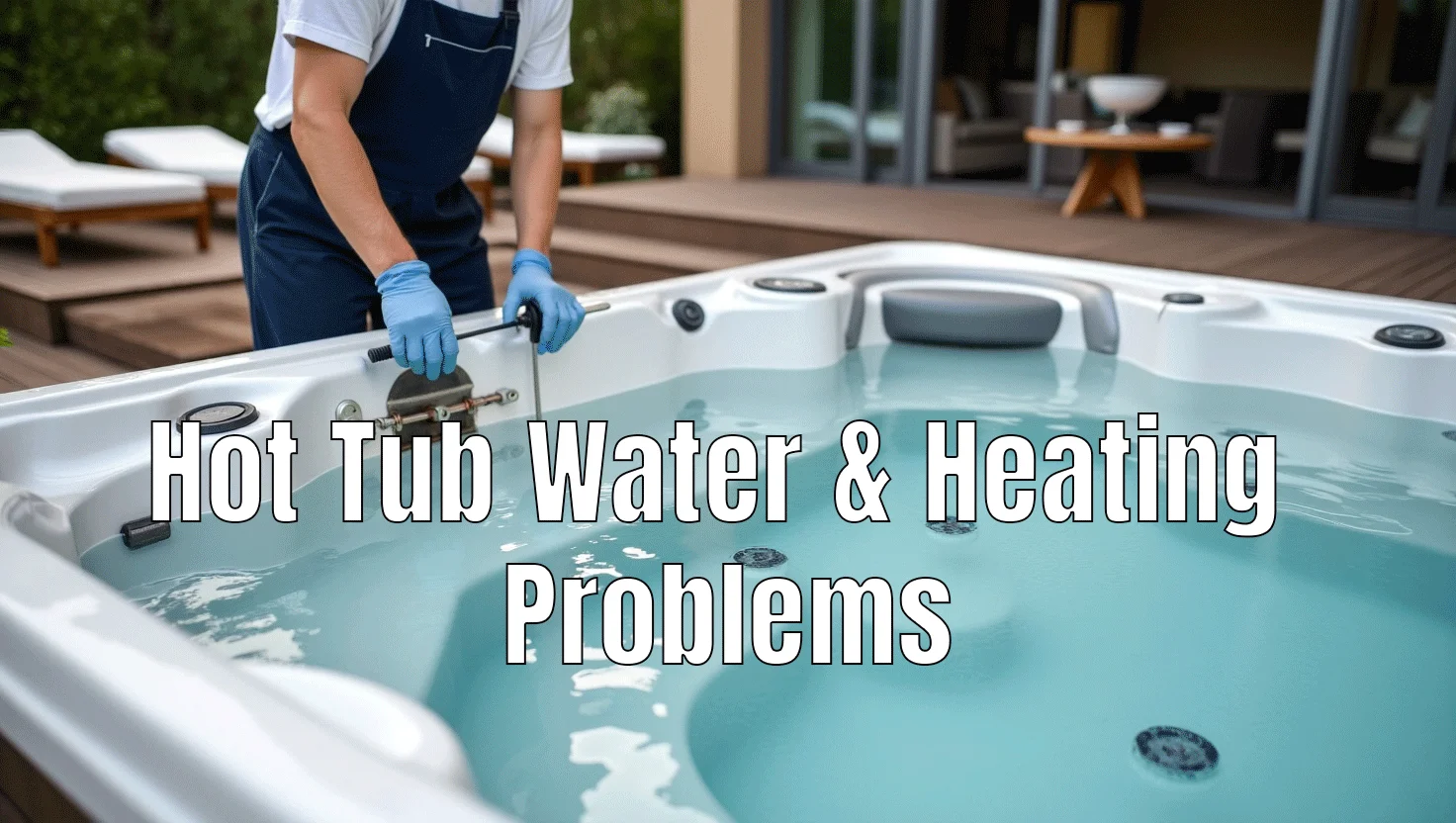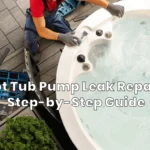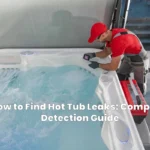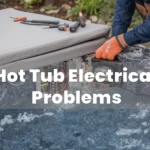Nothing frustrates an individual more than trying to use hot tub water that is either too cold or perhaps too hot and filthy. Whether you are experiencing temperature problems, cloudy water or heating mechanism complications, then you have got what you have been seeking. In this comprehensive guide, we answer all the questions about hot tub water and heating and provide step-by-step instructions on how to fix them, as well as maintenance advice with links to additional repair guides.
Whether you are a Do-It-Yourself type of homeowner, a new owner of a spa, or someone desperate to avoid the expense of a service call, this troubleshooting guide can help restore comfort, safety, and peak performance to your hot tub.
Hot Tub Not Heating? Causes & Quick Fixes
Diagnose these issues and check whether the problem is on the plumbing connections. One of the most irritating issues that spa owners have to contend with is a warm tub that has cooled off. When your hot tub heater is not working or the hot tub heater is on and there is no temperature being raised at all, the first place to begin is by:
Common Causes:
- GFCI Breaker had tripped
- Heating Element faulty
- Circulation or low flow problems (FLO error message)
- In case the thermostat is not functioning correctly
- Possibly a bad relay or possibly high-limit switch.
Quick Fixes:
- Reset the breaker and check whether you get any error codes.
- Measure the water level and inspect whether there is an obstruction to the filters.
- An example of a multimeter application is in the resistance measurement of a heater element.
👉 Read Full Guide: Hot Tub Water Won’t Heat – 7 Common Causes & Solutions
Hot Tub Takes Too Long to Heat? Here’s Why
When the hot tub is heating but takes hours to reach the temperature, there is no issue of functionality but one of efficiency.
Causes of Slow Heating:
- The size of the heater does not match the size of the tub.
- A broken or lost cover would allow heat to escape.
- When the outside is cold in winter.
- The circulation may be an issue or perhaps the filters have been blocked.
Advice on how to accelerate heat-up time:
- Attempt a spa cover that is insulated
- You must wash the filters or change them.
- Heat with jets on
- Where possible pre-heat the water then fill it.
👉 Read: Hot Tub Takes Too Long to Heat? Fix Slow Heating Fast
Why Is My Hot Tub Overheating? Troubleshoot Fast
When it comes to hot tubs that overheat or regularly reach above 104 degrees Fahrenheit, security shut-offs have their reason; quick response is needed.
Reasons of Overheating:
- There may be a problem with a thermostat or a temperature sensor
- The control board has a stuck heater relay.
- The cover remained on quite long as the jets were on
- Hot environment or warm sun in summer
Possibility of Overheating:
- Heat and skin burns and fatigue
- Stressed pump and heater part
- Plumbing and jets can be damaged by expansion.
👉 Explore: Why Is My Hot Tub Overheating? Troubleshooting & Repair Guide
How to Fix a Hot Tub Heater That’s Not Working
Wondering if the heater element is damaged? Here is how you can check and perhaps correct it yourself.
Step-by-Step Checklist:
- Turn the electricity off and reach the control pack
- Remove the heater wires.
- Attempt to use a multimeter to measure resistance. When it displays between 10 and 14 ohms, that is good.
- Look to check whether it has any rust or build up.
- Change the heater in case of bad readings or when it begins to wear out.
👉 Full Guide: Hot Tub Heater Not Working? Troubleshoot Heating & Pump Issues Fast
Cloudy Hot Tub Water? Impact on Heating System
Not only is cloudy water unsightly it is also a sign of poor filtration and poor chemistry which subsequently lead to heater damage and flow restrictions.
Causes of Cloudy Water:
- Dirty or blocked filters
- Scaling may be caused by excess calcium hardness.
- excessive alkalinity or pH imbalance
- Human-like: Things such as body oils and lotion can accumulate with time.
Fix It:
- Clean filters with a filter cleaner approximately once per week or so.
- Apply shock treatment to the pool on a weekly basis.
- Keep pH within the range of 7.2-7.8 and alkalinity to about 80.
👉 Guide: Cloudy Hot Tub Water? How to Fix Cloudy, Foamy, or Yellow Spa Water Fast
Bad Water Chemistry ? Damaging Heater & Pump Fast
A wrong water chemistry can result in uncomfortable conditions and the wear out of heaters, pumps and seals over time.
Dangerous Water Conditions:
- Low pH (below 7.0) = heater corrosion and copper erosion
- High calcium hardness = scale buildup on heater element
- TDS buildup = cloudy water and inefficient heating
Maintenance Tips:
- Monitoring the water should be done twice or thrice weekly with test strips or digital testers.
- It is worth trying to manage minerals using agents.
- It is supposed to be drained and refilled every 3-4 months.
👉 Read: Hot Tub Water Chemistry Problems Affecting Equipment: Complete Guide
Hot Tub Temperature Fluctuations? Fix Unstable Temps
When your spa temperature continues oscillating, it is faulty sensors or timers or cover misuse.
Common Causes:
- A temperature sensor or probe may be in improper working condition
- Not a good spa cover; it is leaking heat.
- There is a timer or economy mode engaged.
- A lot of difference is made by weather changes such as moving from sun to shade.
Fix & Stabilize:
- Replace temperature sensors where required
- Consider applying a heavy spa cover that will withstand every weather condition
- Consider trying to use a solid spa cover that would withstand all types of weather
👉 See Full Guide: Hot Tub Temperature Fluctuations – Troubleshooting
Bonus: Preventive Maintenance Tips
Cleaning and balancing your hot tub regularly will ensure that you do not encounter most heating issues. To ensure the smooth running of everything, use the following tips:
- Wash the filters weekly and a more in-depth wash once a month.
- Have a pH and alkalinity balance.
- Shock the spa when using it a lot or when it rains.
- Leak, rust, and scale should be checked monthly.
Comparison Table: Symptoms vs. Root Causes
| Problem | Symptoms | Likely Cause | Solution |
| No heat | Cold water, no error | Tripped GFCI, failed element | Reset breaker, test element |
| Slow heat | Takes hours to warm | Low insulation, clogged filter | Clean filter, improve cover |
| Overheating | Too hot, error codes | Sensor failure, stuck relay | Replace sensors, check board |
| Cloudy water | Milky, foamy water | Bad chemistry, poor filtration | Shock, balance water |
FAQs
How hot is the perfect hot tub temperature in the summer and winter?
Summer temperatures are between 97 and 99F but in winter they reach 100 to 104F.
Is it possible that my poor water chemistry would hurt my hot tub heater?
Sure! Corrosion may result due to low pH and in case of calcium concentration exceeding, scale may develop.
How frequently are my filters cleaned?
Wash out once a week and clean it out thoroughly once a month. Switch it twice a year.
Why does my heater shut itself off?
Either it might be due to overheating, flow problems or a blown high-limit switch.
Am I able to do some heating repairs myself?
Issues like clogged filters testing elements and the others that are DIY friendly but with wiring or boards that are involved calling Pro.
Conclusion
The problem of water and heating in hot tubs is frequent yet to a large extent controllable. Heaters that don’t work, lack of heating, cloudy water, or temperature fluctuations, it does not stop here a step by step guide on dealing with it all.
See our in-depth fix guides above to get deep repairs. In the majority of cases, it comes all down to routine maintenance and proper water care to make your spa safe, comfortable and durable.







